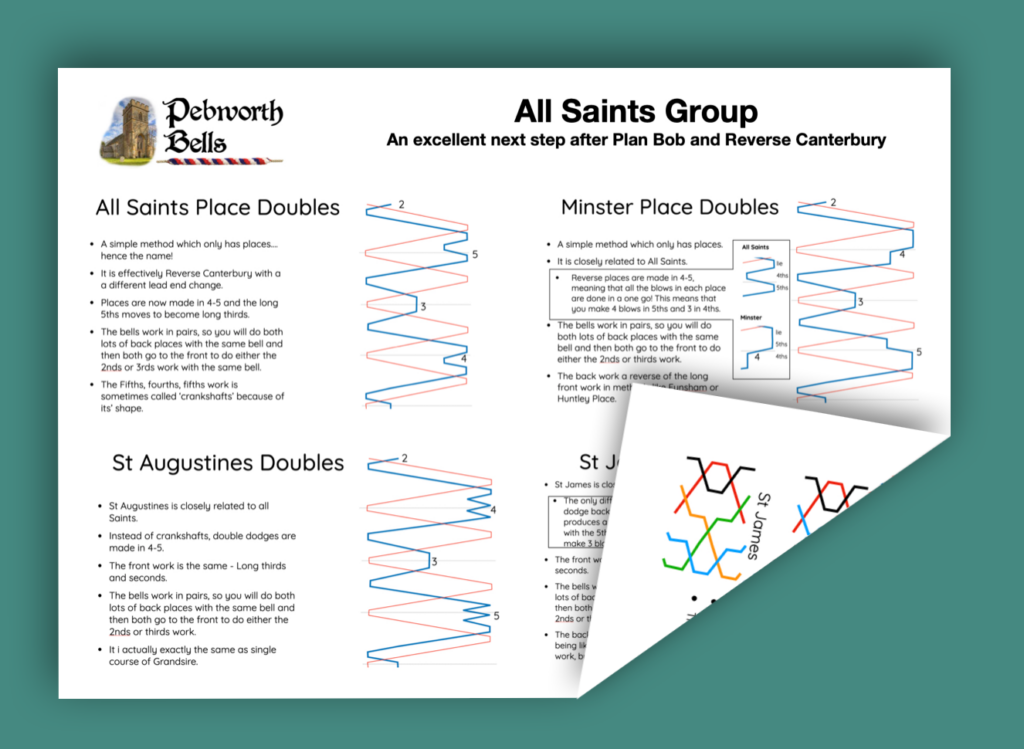All Saints Group
All Saints and its derivatives are simple and easy to learn methods. They have a relationship to St Martins, St Simons and all the other methods that share the four common front works… but in these methods, the front work is inverted and happens at the back!
Print our Crib Sheet
We understand that it is not always possible to look at an online page when inside a tower that has three foot thick stone walls and some folks just like to have something tangible….
So to help, we have produced crib sheet which prints as a two sided A4 sheet. (If your printer can print both sides, remember to set it to short edge binding so the second page prints the right way up!)
The crib sheet contains most of the information you see on this web page, but formatted for A4 paper!

All Saints Place
- A simple method which only has places…. hence the name!
- It is effectively Reverse Canterbury with a a different lead end change.
- Places are now made in 4-5 and the long 5ths moves to become long thirds.
- The bells work in pairs, so you will do both lots of back places with the same bell and then both go to the front to do either the 2nds or 3rds work with the same bell.
- The Fifths, fourths, fifths work is sometimes called ‘crankshafts’ because of its’ shape.

The Treble
- If you look at the All Saints group methods, they all have only plain hunt below the treble… so the bells are the same going up and coming down.
- This makes it ideal for those learning to plain hunt…
- As the first bell is also unaffected at a bob, it gives a second level of consistency for a beginners in that the first bell in sequence is always the last in the previous.
The others methods in the group
If you look at the four methods in this group, the back work is a mirror image of four other well known methods.
- All Saints is a mirror to St Martins
- St Augustine is a mirror to St Simons
- St James is a mirror to St Osmund
- Minter is a mirror to Eynebury
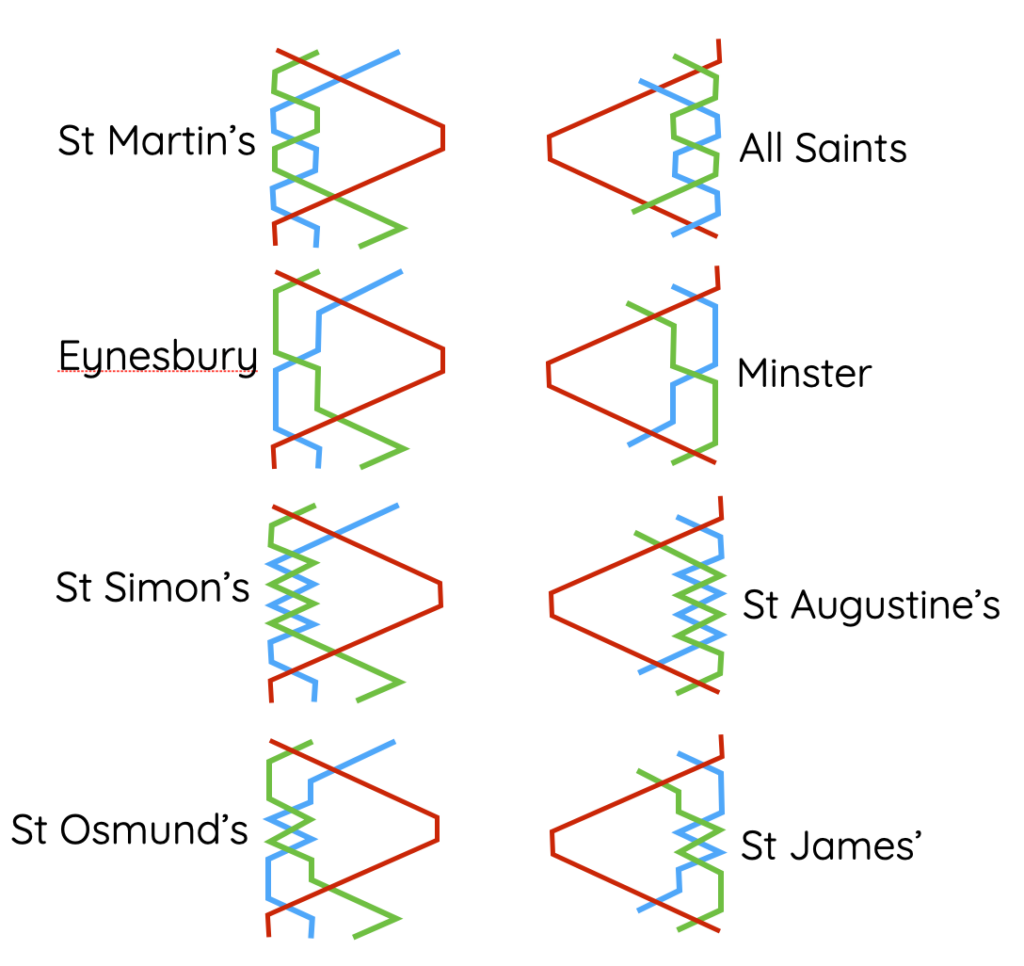

Minster Place
- A simple method which only has places.
- It is closely related to All Saints.
- Reverse places are made in 4-5, meaning that all the blows in each place are done in a one go! This means that you make 4 blows in 5ths and 3 in 4ths.
- The bells work in pairs, so you will do both lots of back places with the same bell and then both go to the front to do either the 2nds or thirds work.
- The back work a reverse of the long front work in methods like Eynsham or Huntley Place.

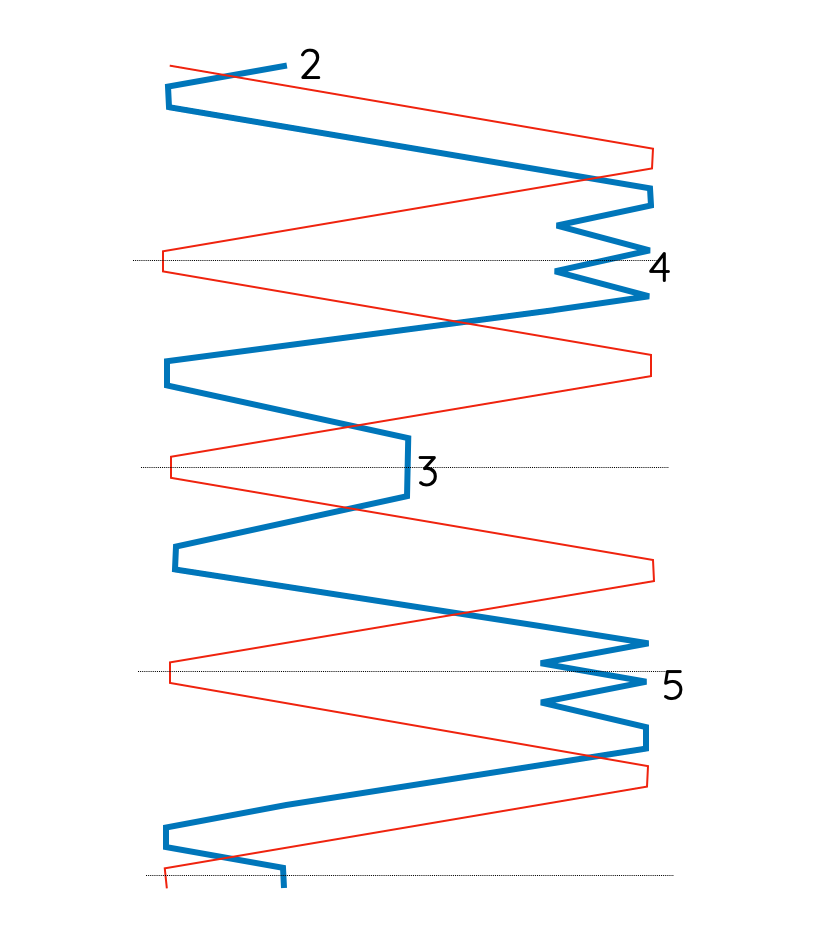
St Augustine
- St Augustines is closely related to all Saints.
- Instead of crankshafts, double dodges are made in 4-5.
- The front work is the same – Long thirds and seconds.
- The bells work in pairs, so you will do both lots of back places with the same bell and then both go to the front to do either the 2nds or thirds work.
- It i actually exactly the same as single course of Grandsire.
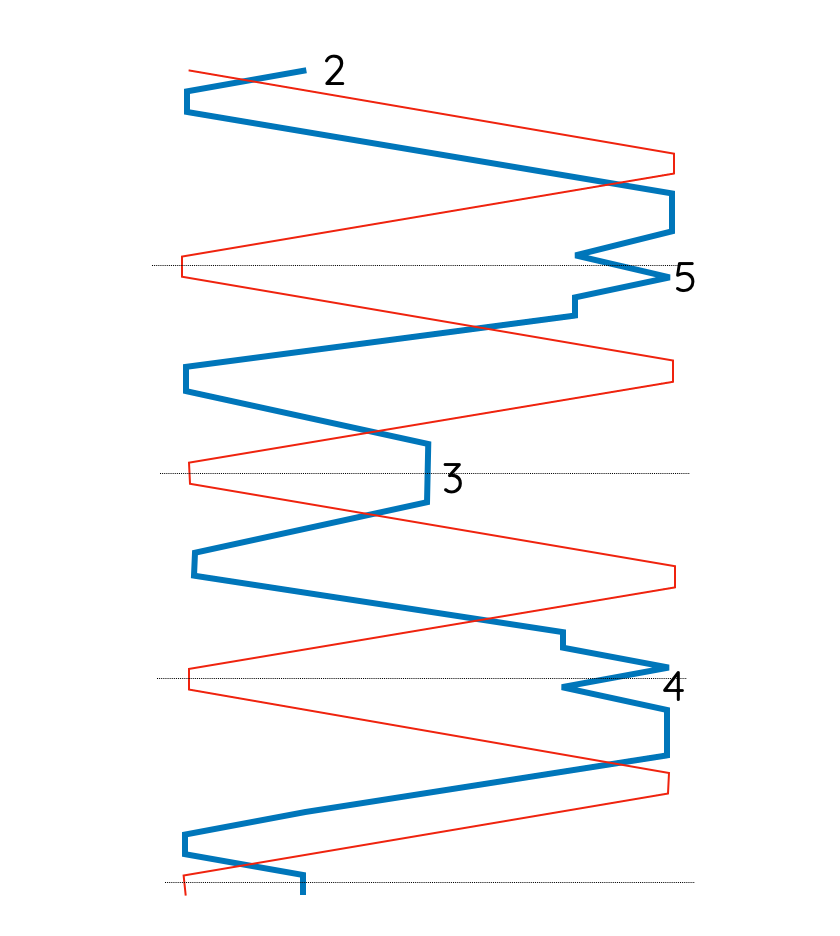
St James
- St James is closely related to St Augustines.
- The only difference is that the double dodge back work is reversed. This produces a ‘place-dodge- place’ shape… with the 5th place adding to the lie to make 3 blows.
- The front work is the same – Long thirds and seconds.
- The bells work in pairs, so you will do both lots of back places with the same bell and then both go to the front to do either the 2nds or thirds work.
- The back work could best be thought of as being like St Osmund or St Remigius front work, but in 4-5.

Bobs
- All these methods have a 123 lead end, so the standard 4th place bob will not work.
- As a result, the standard bob will be a 125 lead end.
- This is the same as most plain lead ends (e.g Plain Bob, Rev Canterbury, etc..)… however, because of the shape of the line, at the back, it will probably not feel like that!
- It means that the bell making 2nds is always unaffected.
All Saints Place
- Just like a plain lead of Reverse Canterbury…
- 3-4 Places out…
- 3-4 Places in…
- 4 behind….
Minster Place
- The bell making 3rds run out – so then does 3 in 4ths then down.
- The bell in 4th runs in, making 3rds on the way.
- The bell at the back does 8 behind… i.e. treble to treble!
St Augustine's
- The back bell will do ‘coat hangers’ .…i.e. lie-point-lie-point-lie.
- The bell in 3rds, runs out to a point in 5ths before returning to the front.
- The bell starting the back dodges will do a point in 5ths and make 3rds on the way down.
St James'
- The bell in 5ths will run in making 3rds on the way.
- The bell in 3rds will run out, to 3 blows in 5ths.
- The bell in 4ths will lie then make 4ths on the way in.

Touches
- Like most doubles methods, only Bobs are required to create an extent.
- If you use a 125 bob then the commonality with the 123 lead end is 2.
- The bell making 2nds is therefore the unaffected bell and is observation.
- It is worth noting that All Saints and St James have a 2534 order and St Augustine and Minster a 2435 order.
- This will make splicing the methods as a group, much more tricky!
- Alternate Bobs will produce a 60.
4 consecutive bobs will make a Bob course for All Saints and St James, but in reality is just a plain course of Reverse Canterbury or Shipway! The other two… like Bob Doubles, come round after 2 leads.
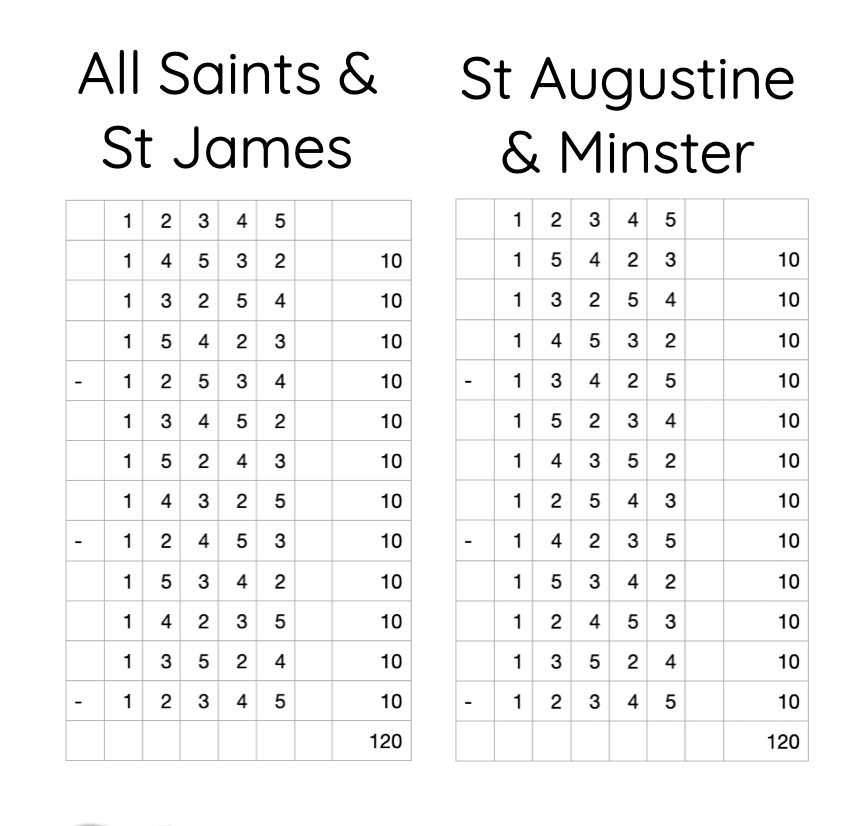
If you want to try extending these methods, the links below will show you the line for St Augustine or All saints Triples. There is also a link to a peal composition for All Saints or any of the other possible back work alternatives.
If you look at All Saints Triples in the CCCBR Library, you will then be able to find all the named (and unnamed) alternatives.

